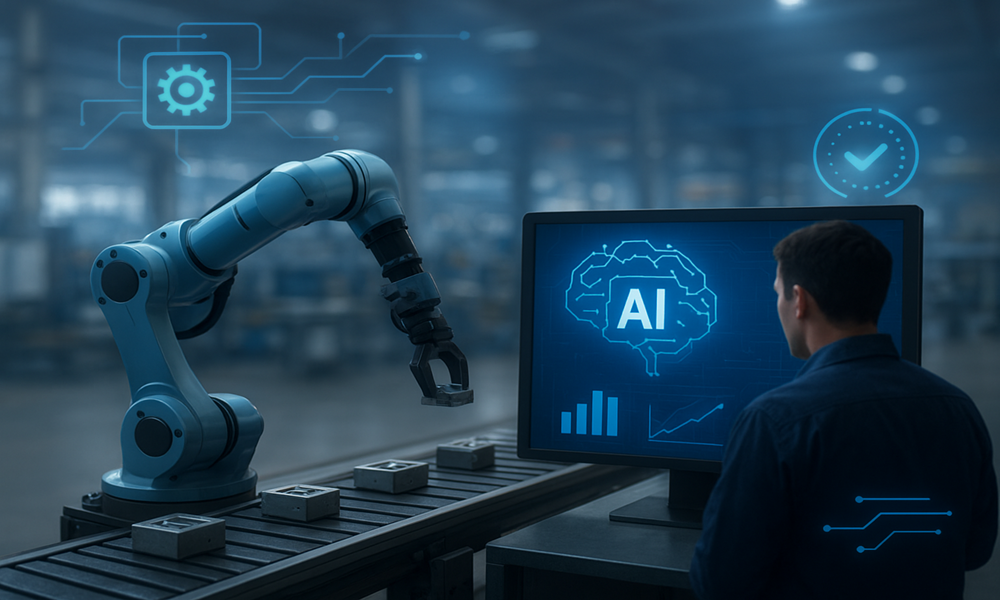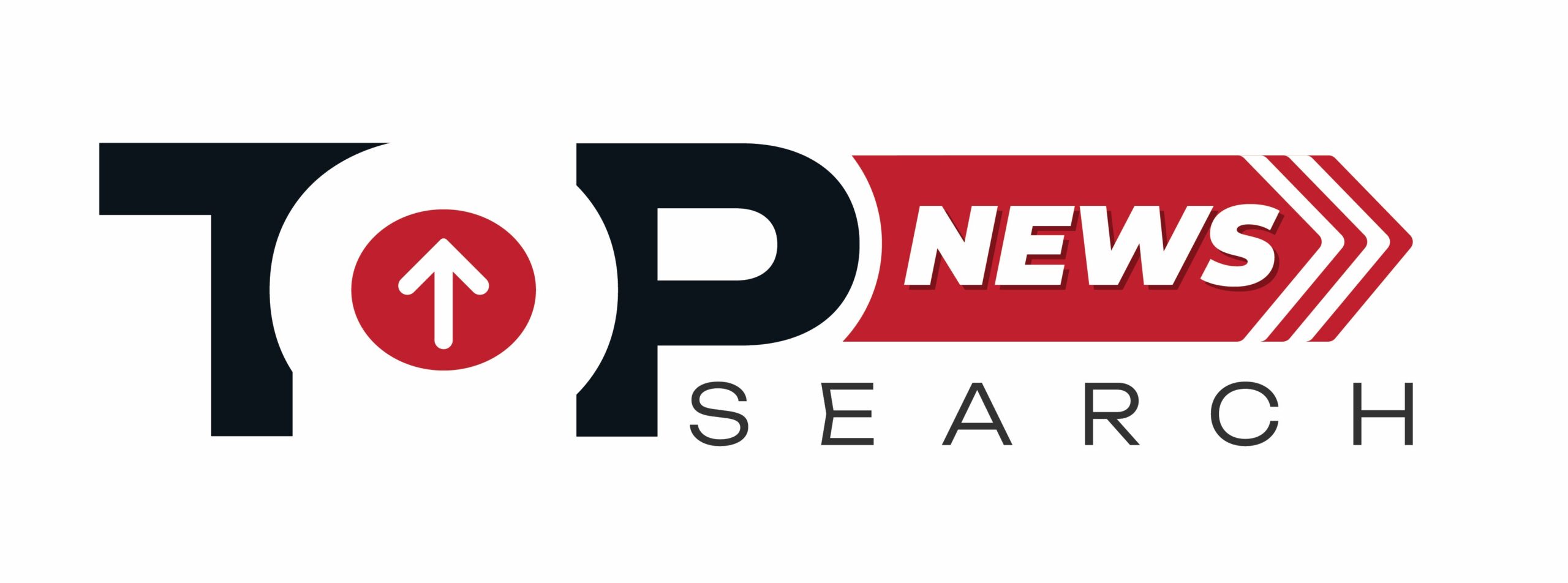
Transforming Logistics: Top AI Tools in Supply Chain 2025
- September 15, 2025
- Top Search
- 2:48 pm

Quick Overview
AI is transforming logistics and supply chain management by improving forecasting, inventory control, and operational efficiency. Discover the top AI tools driving this revolution in 2025.
Introduction
In today’s fast-paced business environment, logistics and supply chain management face complex challenges. Delays, rising costs, fluctuating demand, and global uncertainties require smarter solutions. This is where Artificial Intelligence (AI) comes in.
AI is no longer a futuristic concept—it is reshaping how companies forecast demand, manage inventory, optimize routes, and improve customer satisfaction. By leveraging AI, businesses can enhance efficiency, reduce costs, and make data-driven decisions in real time.
In this blog, we’ll explore the top AI tools transforming logistics and supply chains in 2025, their features, benefits, and implementation strategies.
Why AI is Critical for Logistics and Supply Chain
-
Accurate Demand Forecasting
AI uses historical data, market trends, seasonality, and even external factors like weather to predict demand with high accuracy. This minimizes stockouts and overstocking, saving both time and money. -
Optimized Route Planning
AI-powered tools analyze traffic, weather, and delivery constraints to suggest the fastest and most cost-effective delivery routes. -
Enhanced Inventory Management
AI monitors stock levels, predicts shortages, and automates replenishment, ensuring products are always available when needed. -
Warehouse Automation
Robotics combined with AI can handle picking, packing, and sorting, reducing errors and increasing operational speed. -
Predictive Maintenance
Sensors and AI predict when delivery vehicles or machinery require maintenance, avoiding unexpected breakdowns. -
Real-Time Supply Chain Visibility
AI tracks shipments and inventory across the supply chain, enabling businesses to respond proactively to disruptions. -
Cost Reduction and Sustainability
By optimizing processes, AI reduces operational costs and carbon footprints, contributing to sustainability goals.
Top AI Tools in Logistics & Supply Chain Management
Here are some leading AI tools that are making waves in the industry:
1. ThroughPut AI
ThroughPut AI is a powerful tool for intelligent decision-making across the supply chain.
Key Features:
-
Real-time demand sensing
-
SKU optimization and logistics planning
-
Capacity management and replenishment planning
-
Financial impact analysis
Benefits:
Helps businesses respond quickly to market changes, reduces operational costs, and ensures supply chain agility.
2. Logility
Logility offers AI-driven solutions for inventory and demand management.
Key Features:
-
Accurate demand planning and forecasting
-
Inventory optimization
-
Supply chain visibility
Benefits:
Streamlines operations, reduces wastage, and improves forecasting accuracy.
3. Blue Yonder
Blue Yonder provides end-to-end predictive analytics for supply chain planning.
Key Features:
-
Predictive demand forecasting
-
Omnichannel inventory management
-
Stock-level optimization
Benefits:
Enhances customer satisfaction and reduces stockouts or overstock situations.
4. Oracle AI-powered Supply Chain Management (SCM Cloud)
Oracle SCM Cloud offers real-time visibility and intelligent planning.
Key Features:
-
Inventory and shipment tracking in real-time
-
Risk management through AI analytics
-
Demand forecasting and optimization
Benefits:
Improves decision-making, reduces operational costs, and enhances supply chain resilience.
5. Kinaxis RapidResponse
Kinaxis provides real-time supply chain planning and concurrent monitoring.
Key Features:
-
Real-time visibility of supply chain operations
-
AI-powered demand forecasting
-
Agile decision-making tools
Benefits:
Enables quick response to disruptions, enhances efficiency, and ensures timely deliveries.
6. IBM Watson Supply Chain
IBM Watson leverages AI to provide predictive insights and actionable recommendations.
Key Features:
-
Cognitive technology for operational efficiency
-
Predictive analytics for disruptions
-
Sustainability and resilience-focused solutions
Benefits:
Helps businesses navigate complex supply chains and optimize performance.
Benefits of AI in Logistics & Supply Chain
-
Operational Efficiency: Reduces manual tasks, speeds up operations.
-
Cost Reduction: Minimizes wastage, fuel consumption, and human error.
-
Accurate Forecasting: Better demand predictions and inventory management.
-
Enhanced Customer Satisfaction: Faster deliveries, fewer errors, and improved tracking.
-
Sustainability: Optimized routes and reduced resource consumption.
-
Risk Mitigation: Predicts disruptions and enables proactive measures.
How to Implement AI Tools in Your Supply Chain
-
Evaluate Current Processes: Map out your existing supply chain operations and identify pain points.
-
Ensure Data Quality: Collect clean, accurate, and structured data for AI algorithms.
-
Select the Right Tools: Choose AI platforms that fit your business size and goals.
-
Integrate Systems: Ensure AI tools work seamlessly with ERP, WMS, and TMS systems.
-
Train Staff: Provide training for employees to efficiently use AI tools.
-
Monitor and Optimize: Continuously track performance and make necessary adjustments.
Challenges in Adopting AI
-
Data quality and integration issues.
-
High initial investment costs.
-
Staff resistance and training requirements.
-
Cybersecurity and data privacy concerns.
-
Choosing scalable, user-friendly tools.
Future of AI in Logistics & Supply Chain
-
Autonomous Vehicles & Drones: AI-driven deliveries reducing human intervention.
-
Advanced Predictive Analytics: Proactive problem-solving across the supply chain.
-
End-to-End Automation: From procurement to delivery.
-
AI for Sustainability: Reduced energy use, smarter packaging, and optimized transportation.
- Blockchain & AI Integration: Improved transparency and security in global supply chains.
Conclusion
Artificial Intelligence is no longer optional in logistics and supply chain management—it’s essential for businesses aiming to stay competitive in 2025. From predictive forecasting and optimized inventory to real-time visibility and automated operations, AI tools are driving a smarter, faster, and more sustainable supply chain.
By strategically implementing AI, businesses can reduce costs, improve efficiency, and enhance customer satisfaction, ultimately future-proofing their operations for years to come.
FAQs
AI in supply chain uses machine learning and data analytics to improve demand forecasting, inventory management, route optimization, and decision-making.
AI automates processes, predicts demand, optimizes routes, reduces errors
Some top AI tools include ThroughPut AI, Logility, Blue Yonder, Oracle SCM Cloud, Kinaxis RapidResponse, and IBM Watson Supply Chain.
Yes, AI helps reduce operational costs by optimizing routes, minimizing stockouts/overstocks, and improving warehouse efficiency
Absolutely! Many AI tools are scalable, allowing small businesses to start with key features like demand forecasting and inventory optimization.
Quora Insights
- How has AI transformed logistics management software in 2025?
- How might AI change education in the future?
- Do you think automation and AI will replace human expertise in supply chain management?
- What are the biggest risks and rewards of integrating AI into supply chain and logistics systems?
- What is artificial intelligence in supply chain management?

Recent Posts:


AI in Manufacturing: From Competitive Edge to Industry Need


